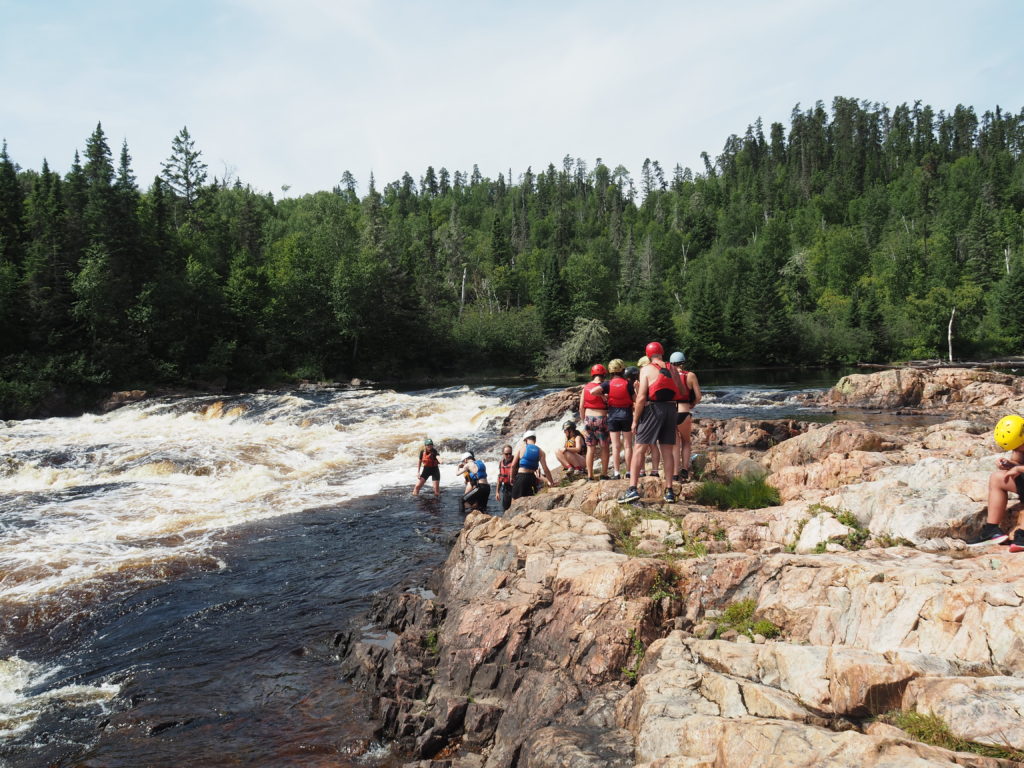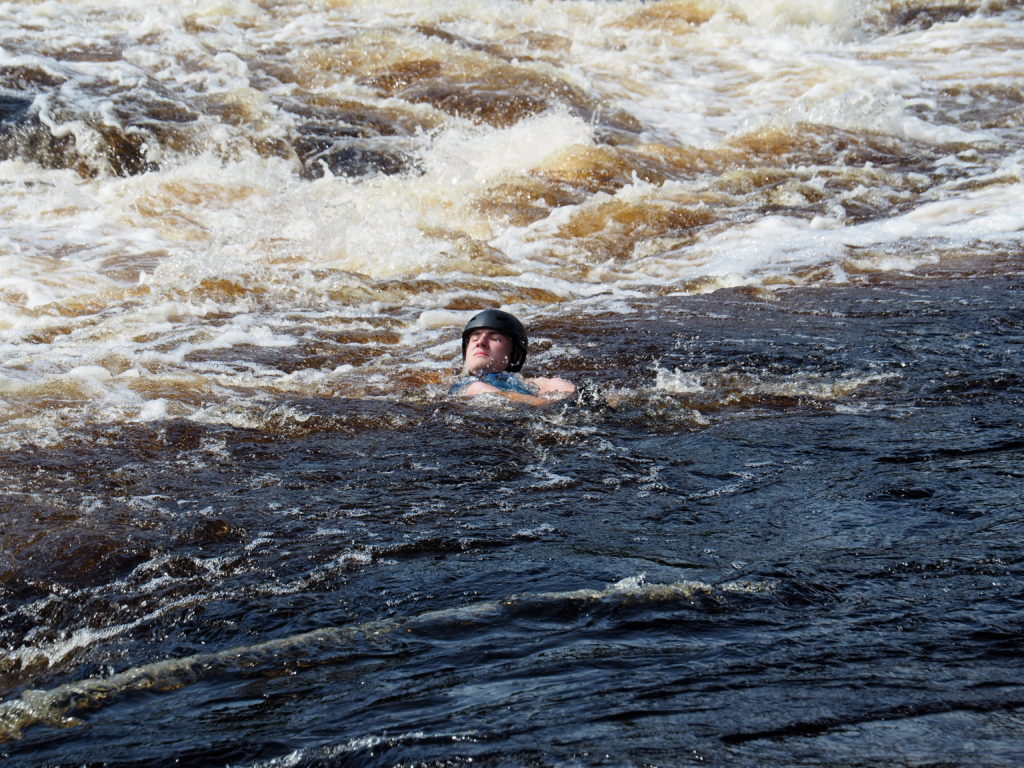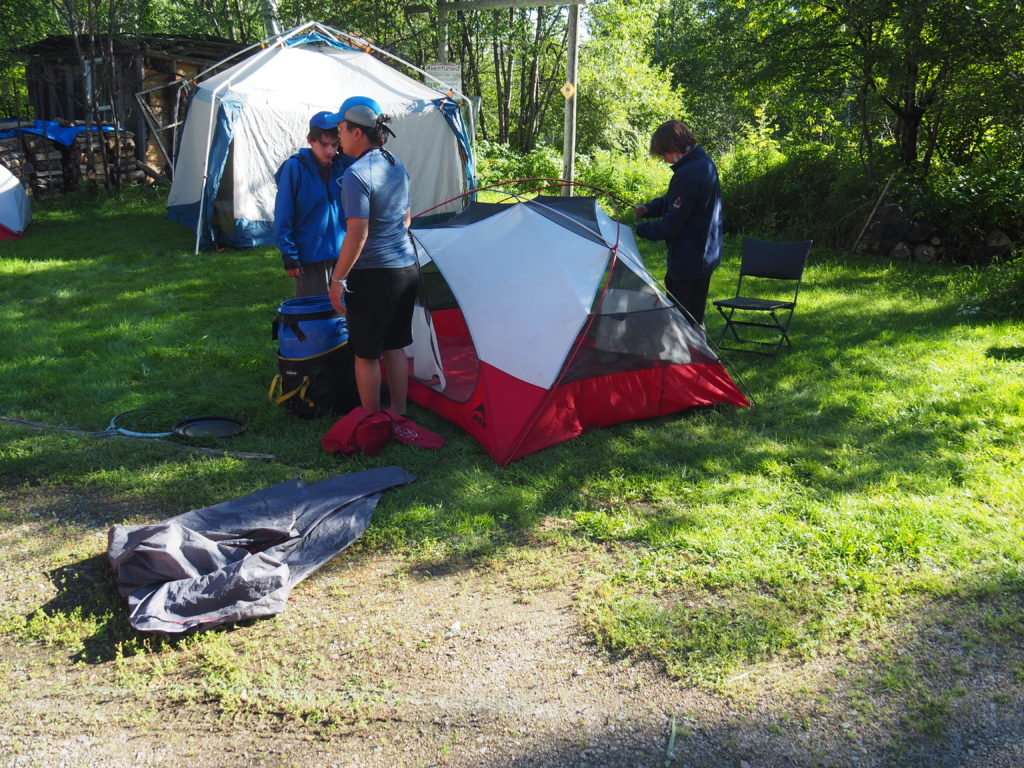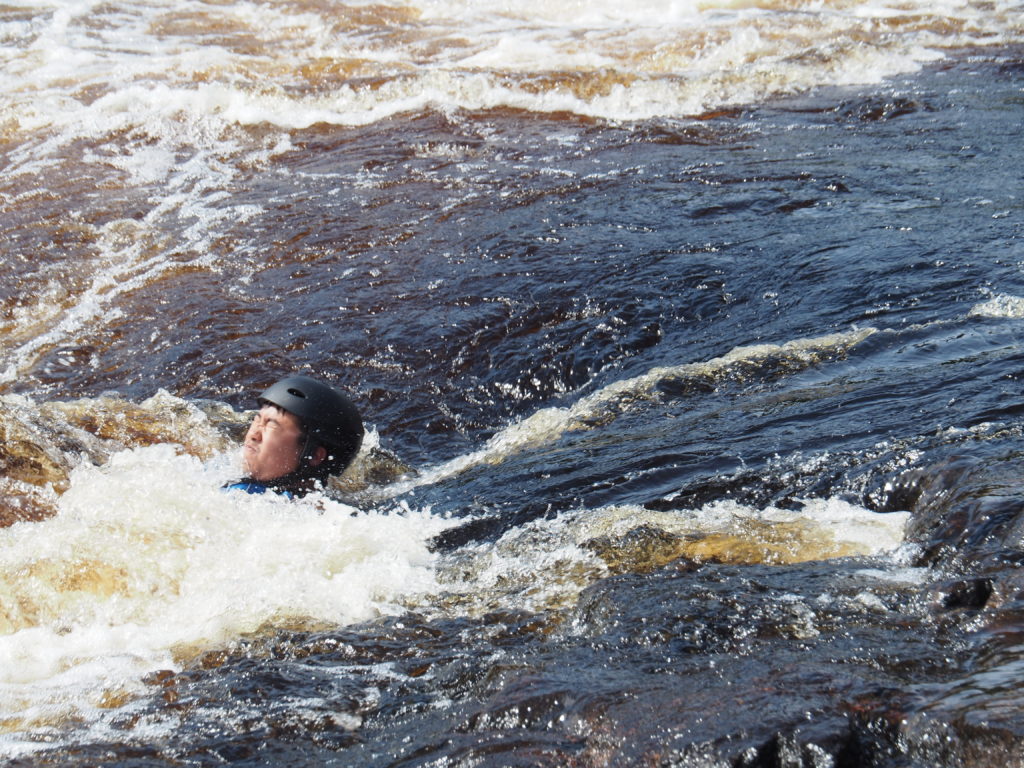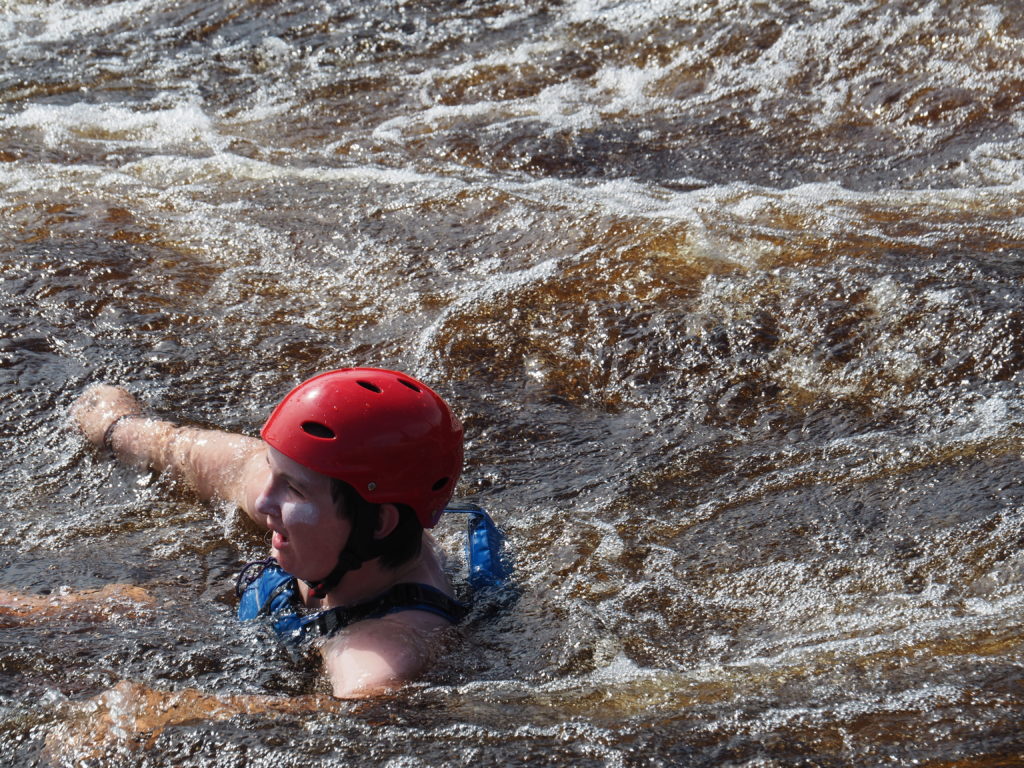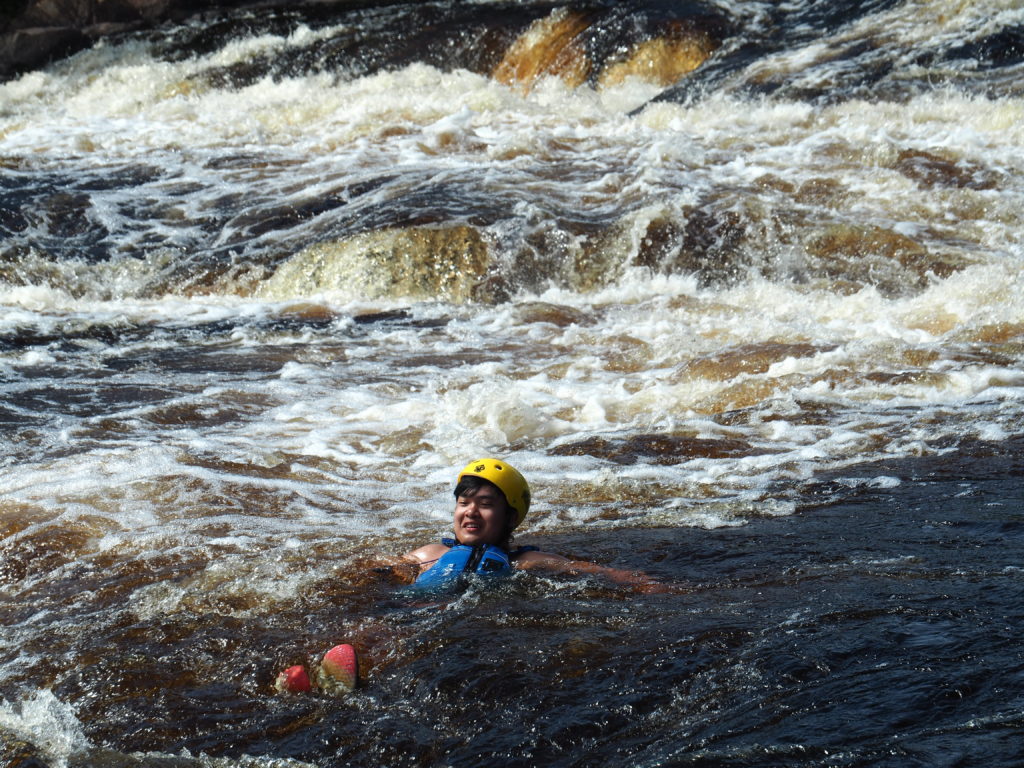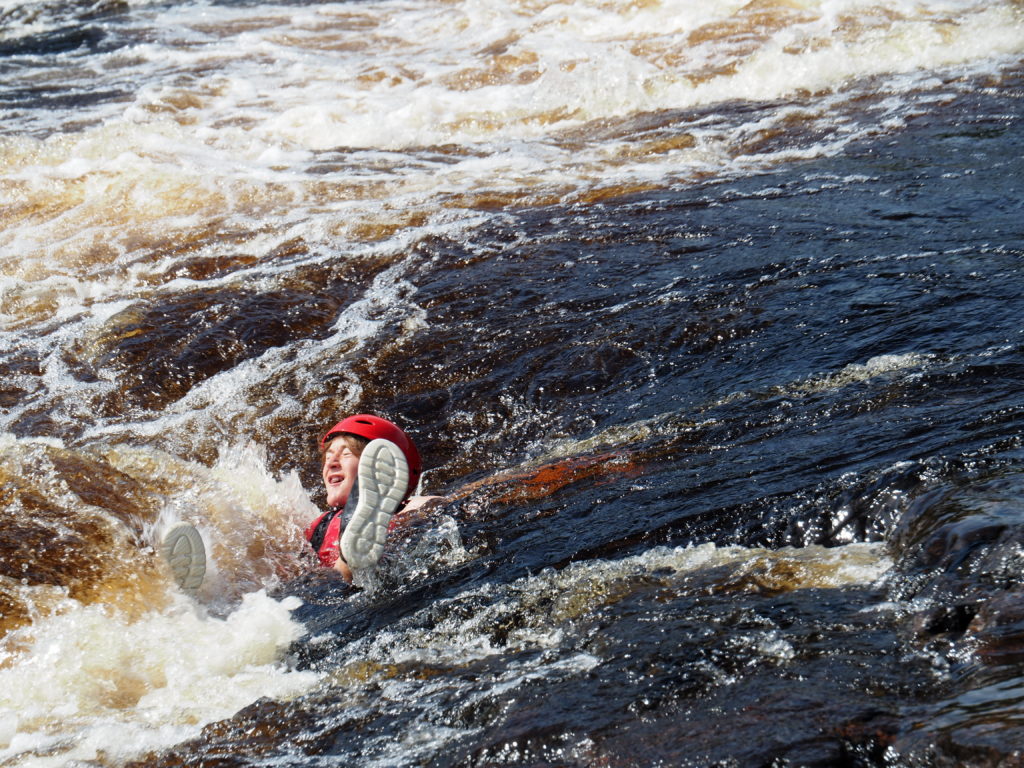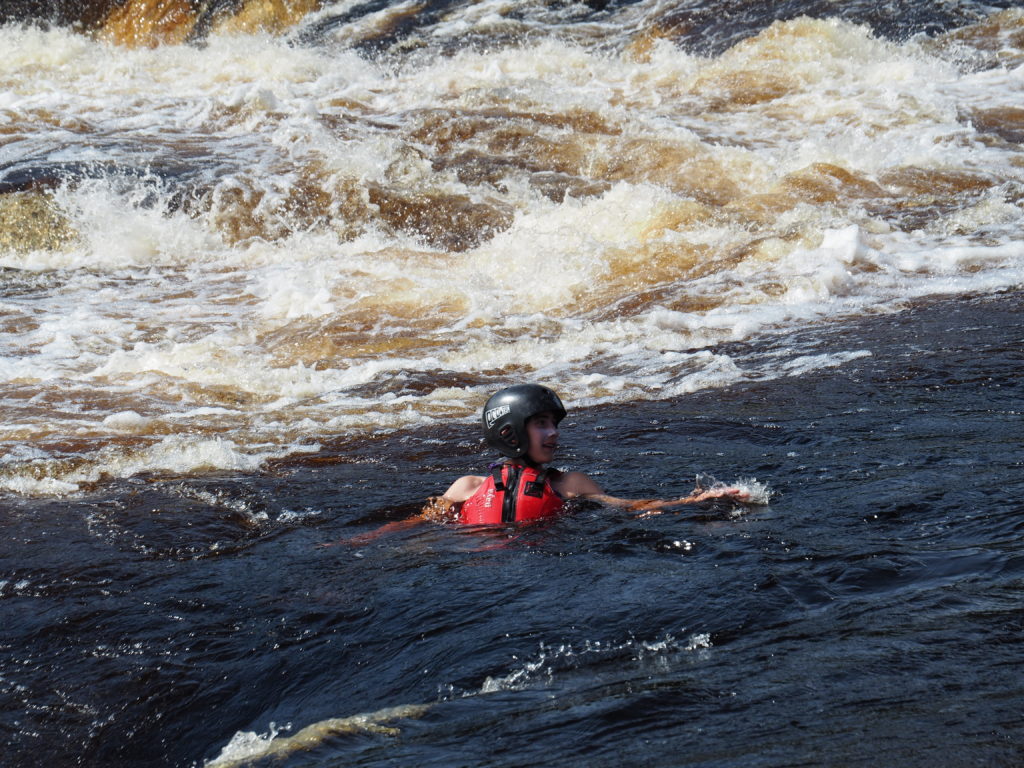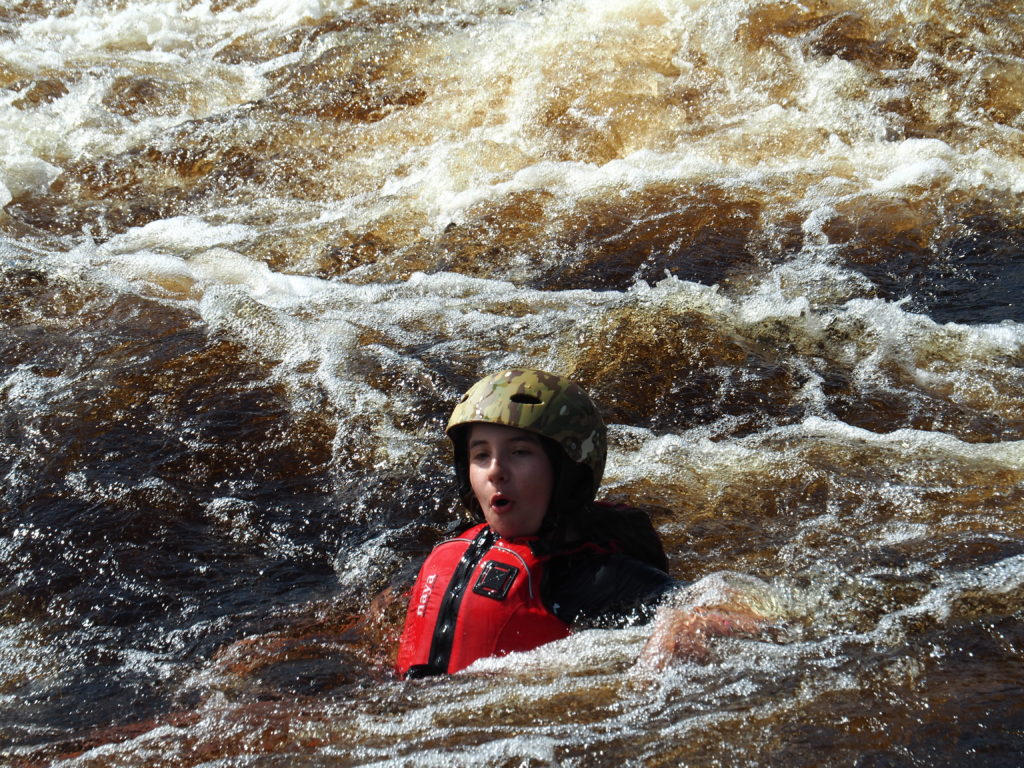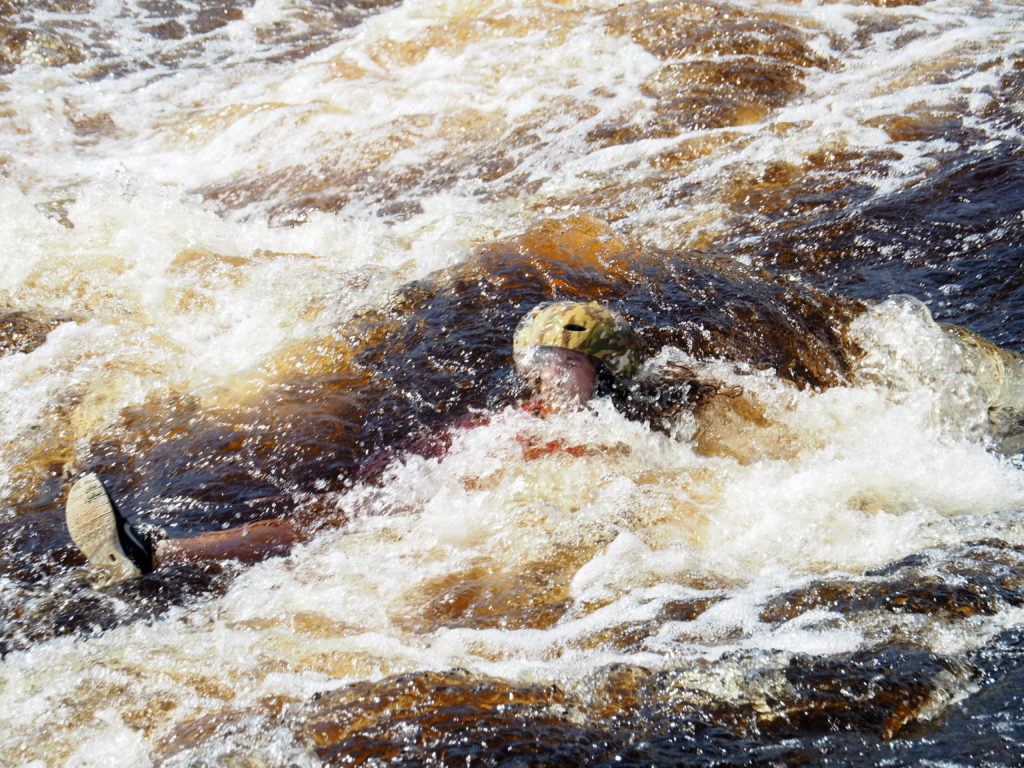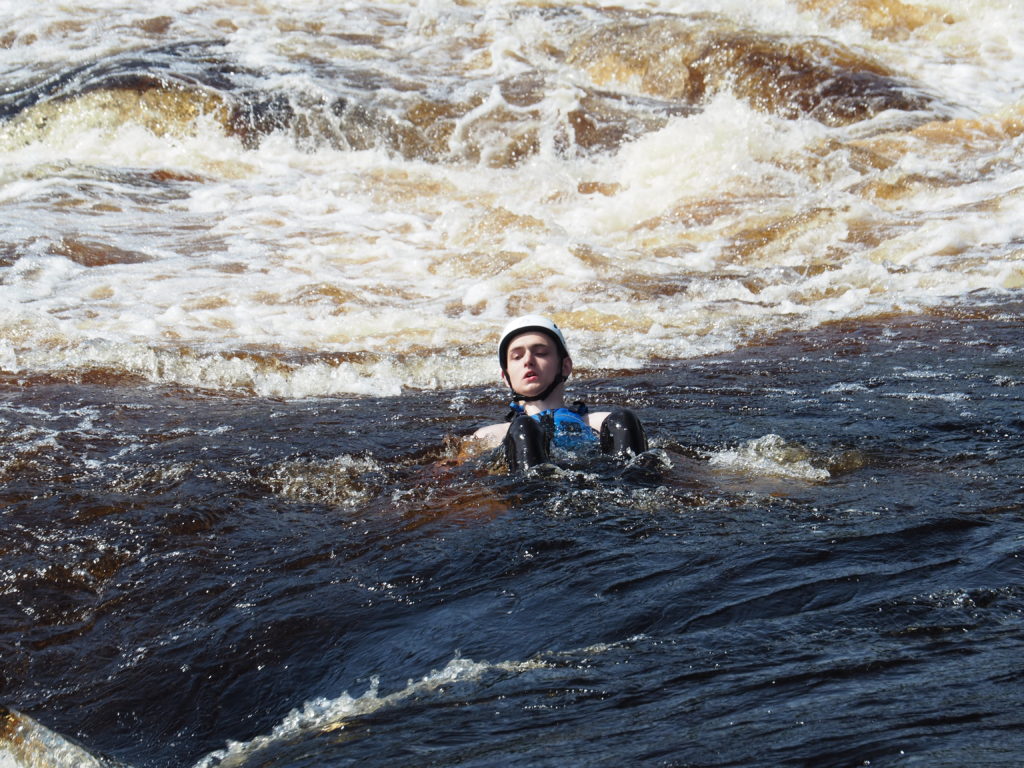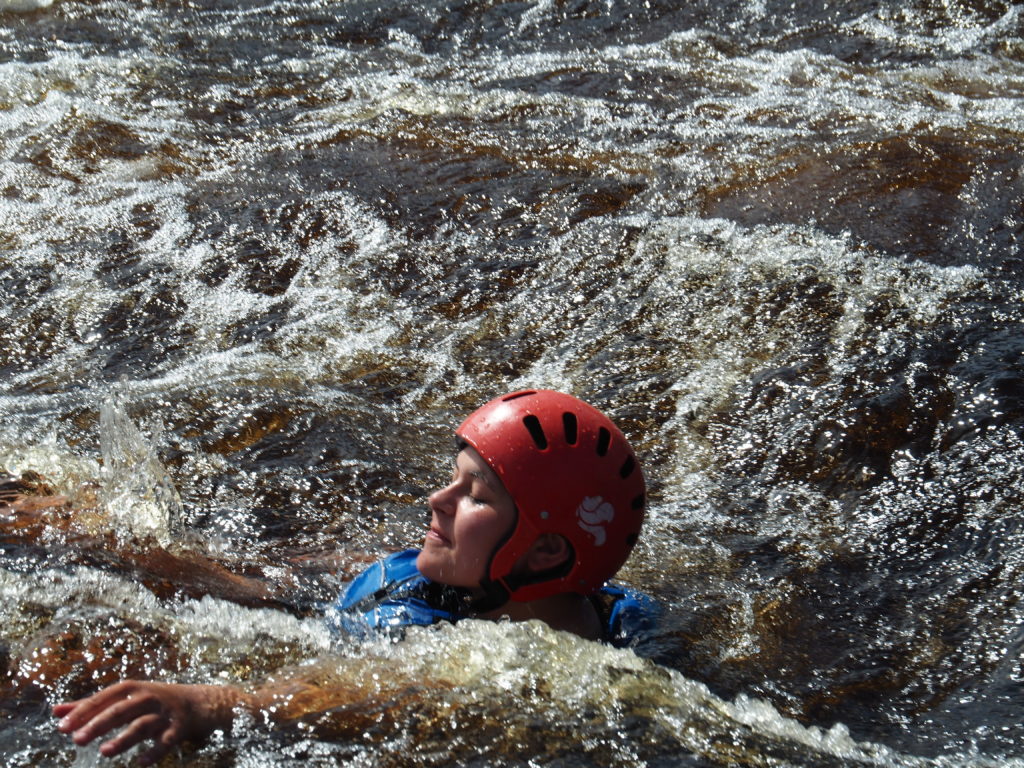Date
Categories
Ouasiemsca is the name of the river that we will partially descend today. The idea is to add some whitewater canoeing techniques to our repertoire, a bit like adding a cherry on the cake. On the program: practising safety techniques and then a few Class 1 rapids and a Class 2, and ending in grand style with Class 3 rapids.
Ouasiemsca, which according to the sources consulted means: the place where one sees/observes beavers.
This morning, we only have a short ride to do. We make an easy launching during which some participants even carry our 16-foot canoes on their own, from the trailer to the launching point.
We quickly stop on a small island caught between two small barriers. Before lunch, we will have fun in different ways in the water channels at the foot of the barriers.
The first activity is essential for the safety of participants and supervisors. It’s about learning how to behave if you find yourself in the water in a whitewater section. The instructions of Gilles, Leader of our team of guides, are very clear: at all times, feet forward and high, head back and we steer by paddling with our hands.
Now, we go from theory to practise: one after the other, everyone throws themselves into the water and lets themselves go down. Some, despite good technique, still bump their behinds against the rocks. We all got away with it without much damage. And many repeat the exercise several times.
Afterwards, we learn how to cross a vein of rapids while remaining at the same height on the river. As Gilles says, it’s not a question of strength, but rather of speed, angle and heel. After a few drawings in the sand to be sure that everyone has understood correctly, we practise our movements repeatedly and it is not very long that the exercise is successful with great consistency by all. Some even try to take the current with some success, even if the elegance is not there.
And it’s lunch time, with its array of spreads and sausages. There is something for every taste. Carrot raisin cookies disappear just as quickly as molasses cookies.
Now it’s time for serious things: we end our expedition on a section of river where the rapids run in increasing difficulty levels. Here also the instructions are clear: there is a prescribed sequence of descent and everyone follows one another in single line. This way of doing things allows you to take advantage of the guide’s reading of the river and to have a good idea of the line to take.
From the first R1, some discover “by chance” where the rocks are and run aground. But overall it’s going pretty well. We have a canoe filling up with water in another rapid. And for the last rapid, the Class 3, there is even a crew going down the big wave train backwards, an involuntary maneuver from which the crew manages to get away without getting wet. There are days when it is better to be lucky than to be good.
The exit is only a hundred metres from the end of the rapids and once you get there, it’s a real “machine” that starts to load the trailer.
Everyone found the day very pleasant and exciting. It was literally the high point of this expedition, an intense moment that stood out. Good way to end this experience!
Tomorrow, I’ll tell you about our last evening around the fire which was also exceptional.
– Louis-Étienne Prévost, Blogger and Photographer for the On the Tip of the Toes Foundation
